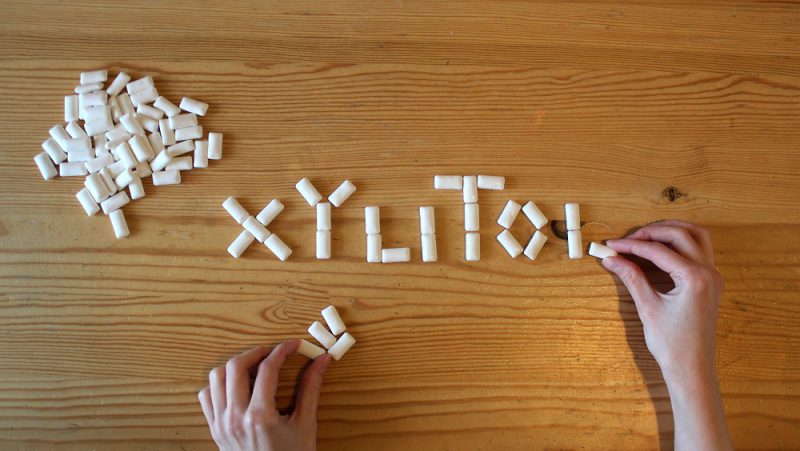
Xylitol is gaining popularity everyday with humans. It is a sugar alcohol, that is healthier than sugar, due to its lower glycaemic index.
It is used to sweeten sugar-free products such as gums, candies, and baked goods.
Xylitol is highly toxic in dogs. The effects on cats are poorly researched but I would still recommend to rather keep Xylitol containing products away from your cat. There is only a few reported cases of xylitol toxicity in cats, but this is mostly due to their dislike in these products.
Why is xylitol toxic to dogs?
Xylitol is rapidly absorbed into a dogs bloodstream. This will result in a potent release of insulin from the pancreas.
This quick release of insulin, will cause the blood glucose of your dog to plummet rapidly. The effects may be seen as early s 10-60 minutes after eating xylitol, This drop in blood glucose can become fatal, if left untreated.
Ingestion of xylitol may also result in acute liver failure.
Common household products containing xylitol:
- Breath mints and gum
- Baked goods
- Sugar free products eg chocolate, ice-creams
- Cough syrup
- Mouthwash
- Toothpaste
- Nut butters
- Over-the-counter medicines
- Chewable vitamins
- Dietary supplements
My pet ingested xylitol, what now?
If you suspect your pet has ingested xylitol, take them to the vet asap.
Take the packaging of the product ingested with you.
Symptoms:
- Drowsiness
- Restlessness
- Weakness
- Muscle tremors
- Convulsions
- Vomiting
- Bloody Diarrhea
Treatment:
Fast and effective treatment is of utmost importance when your dog has ingested xylitol.
If your dog has just eaten xylitol but has not yet developed any clinical signs, your veterinarian may induce vomiting to prevent further absorption, depending on what your dog’s blood glucose level is. If clinical signs have developed, treatment will be symptomatically.
In all cases, your dog will require hospitalization for blood sugar monitoring, dextrose administration, intravenous fluids, liver protectants, and any other supportive care that may be needed. Your vet will check your dog’s blood values frequently to monitor blood glucose levels and liver function.
Prognosis:
If treatment was implemented before any clinical signs developed prognosis is good. As soon as liver daage becomes evident prognosis becomes more guarded.
Prevention:
Prevention is always better than cure. Make sure all products that contain xylitol is safely stored away.
Always use only pet approved toothpastes and treats